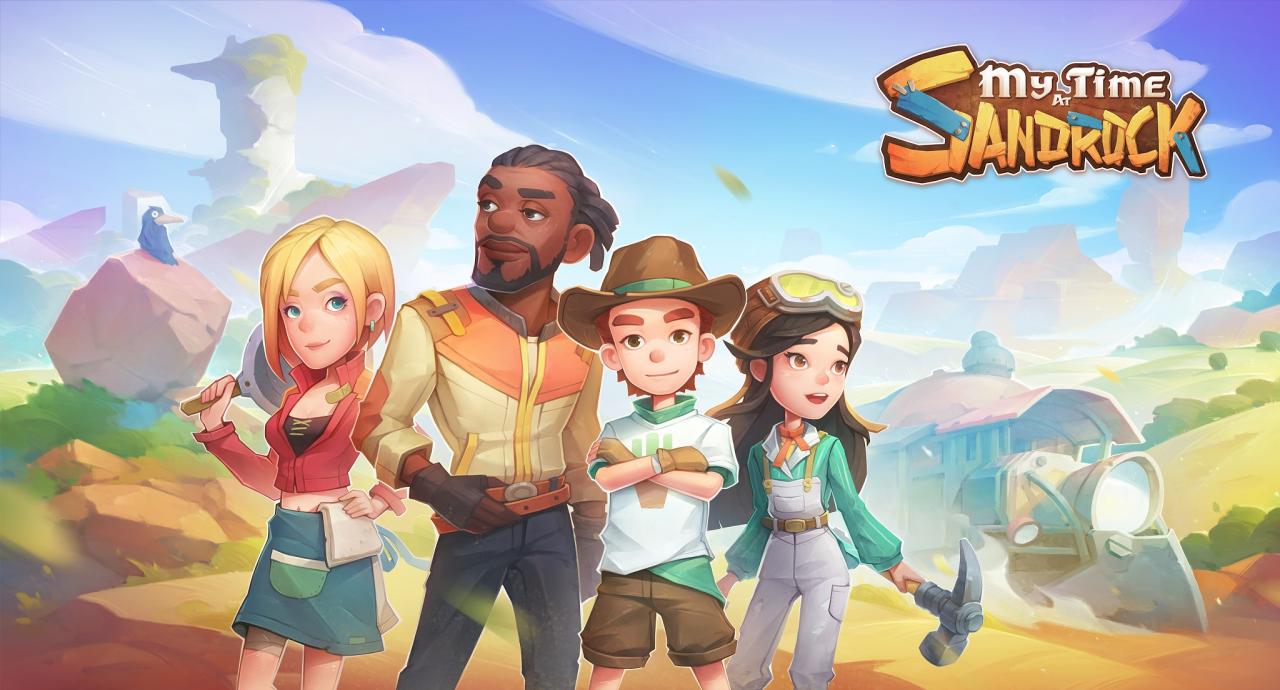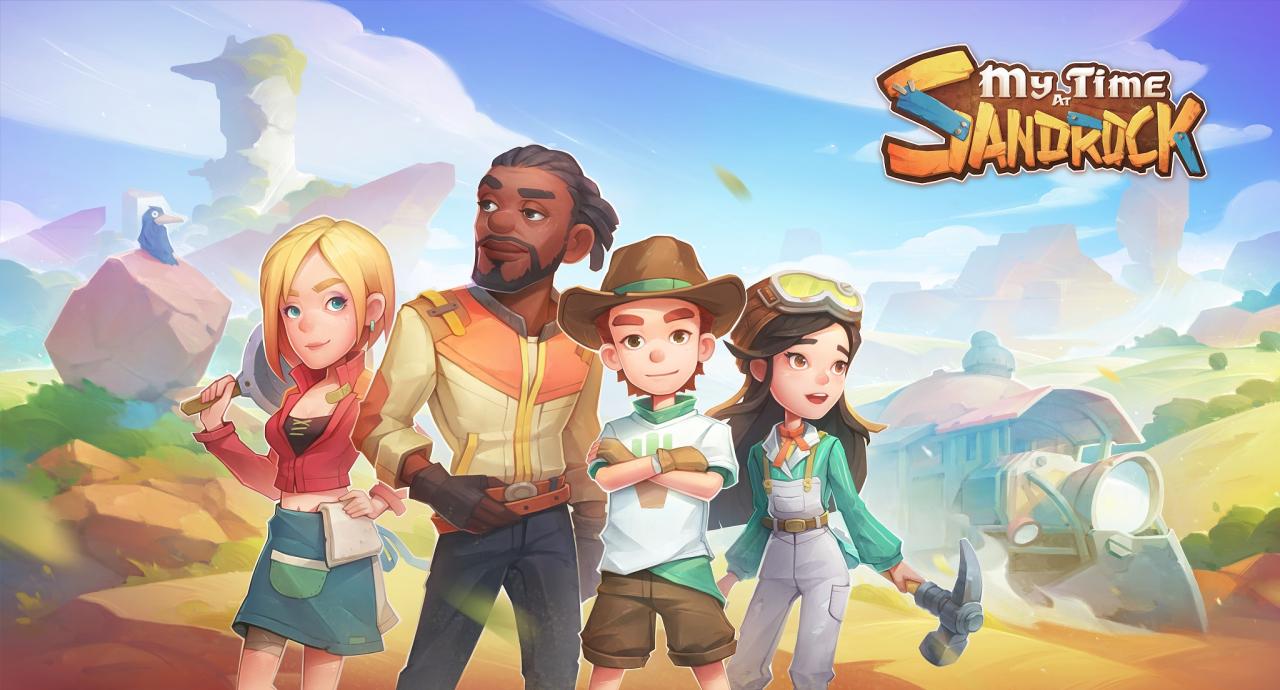Sea salt my time at sandrock – Sea Salt: The Vital Resource in My Time at Sandrock offers an in-depth analysis of the significance of sea salt in the captivating world of My Time at Sandrock. This guide explores the multifaceted role of sea salt, from its gameplay mechanics to its impact on the town’s economy and cultural dynamics.
Sea salt serves as a crucial resource in My Time at Sandrock, contributing to a vibrant and immersive gameplay experience. Join us as we delve into the unique setting of Sandrock, where sea salt plays a pivotal role in crafting, building, trading, and shaping the very fabric of the town.
Sea Salt’s Role in My Time at Sandrock: Sea Salt My Time At Sandrock
Sea salt plays a vital role in My Time at Sandrock, a crafting and building game where players take on the role of an architect tasked with rebuilding a frontier town. This versatile resource is used in various aspects of gameplay, from crafting essential items to facilitating trade and contributing to the in-game economy.
Crafting and Building
- Essential Ingredient:Sea salt is a key ingredient in the production of several essential items, including glass, fertilizer, and explosives.
- Construction Material:It is also used as a component in the construction of certain buildings, such as the Glassblowing Workshop and the Greenhouse.
Trading and Economy, Sea salt my time at sandrock
- Valuable Commodity:Sea salt is a highly sought-after commodity in Sandrock, as it is not naturally available in the town. Players can trade sea salt with merchants to earn valuable resources.
- Price Fluctuations:The value of sea salt fluctuates based on supply and demand, creating opportunities for players to engage in profitable trading.
My Time at Sandrock’s Unique Setting

My Time at Sandrock takes place in the titular town of Sandrock, a remote desert settlement nestled amidst towering cliffs and vast, sandy dunes. The harsh environment has shaped the lives and culture of the townsfolk, fostering a resilient and resourceful community.
Geographical Location and Environmental Characteristics
Sandrock is situated in the arid region of Eufaula, a continent known for its extreme temperature fluctuations and unpredictable weather patterns. The town is surrounded by treacherous canyons and rocky outcrops, which provide both shelter and obstacles. The scarcity of water and fertile land has forced the residents to adapt and find innovative ways to sustain themselves.
- Arid climate with scorching summers and frigid winters.
- Rugged terrain with steep cliffs and sandy dunes.
- Limited water resources and vegetation.
- Abundance of natural resources such as minerals and ores.
Cultural Influences and Societal Dynamics
Sandrock’s unique setting has influenced its cultural and societal dynamics. The town is a melting pot of diverse cultures, with influences from both Eastern and Western civilizations. The residents are known for their strong sense of community and their willingness to help one another.
- Diverse cultural influences, including Eastern and Western elements.
- Strong sense of community and cooperation.
- Resourcefulness and adaptability due to the harsh environment.
- Emphasis on sustainability and conservation.
Gameplay and Character Interactions
The setting of Sandrock plays a significant role in gameplay and character interactions. The harsh environment presents challenges that players must overcome, such as water scarcity and extreme temperatures. The diverse cultural influences and societal dynamics shape the relationships between characters, creating unique and memorable interactions.
- Resource management is crucial due to limited water and fertile land.
- Environmental hazards such as sandstorms and droughts can affect gameplay.
- Cultural differences and societal dynamics influence character interactions and quests.
- The unique setting provides opportunities for exploration and discovery.
Character Development and Relationships
In My Time at Sandrock, players assume the role of the Builder, a skilled artisan tasked with rebuilding the frontier town of Sandrock. The Builder’s motivations are driven by a desire to make a meaningful contribution to the community, shape the town’s future, and forge lasting relationships with its inhabitants.
Interactions and Relationships
Sandrock is populated by a diverse cast of characters, each with their own unique personalities, backstories, and relationships with the Builder. These interactions play a crucial role in the storyline and gameplay, as the Builder’s choices and actions can influence the development of these relationships.
- Mi-an:A young and ambitious architect who assists the Builder in town planning and construction projects. Her unwavering support and optimism create a strong bond between the two characters.
- Yan:A skilled engineer with a passion for innovation. His admiration for the Builder’s craftsmanship leads to a mutually respectful relationship built on shared interests.
- Arlo:The town’s mayor and a wise and experienced leader. His guidance and trust in the Builder’s abilities shape the town’s progress and the Builder’s sense of responsibility.
Impact on Storyline and Gameplay
Character development and relationships have a significant impact on the storyline and gameplay of My Time at Sandrock. The Builder’s choices and actions in interacting with other characters influence the town’s development, the availability of resources and support, and the overall progression of the story.
- Relationship-Based Quests:Many quests and storylines in the game are triggered by the Builder’s relationships with other characters. Completing these quests strengthens bonds and unlocks new gameplay opportunities.
- Character-Specific Abilities:As the Builder develops relationships with certain characters, they gain access to unique abilities and skills that enhance their crafting and town-building capabilities.
- Community Events:The Builder’s relationships with the townsfolk also influence community events and festivals, creating a sense of belonging and involvement in the town’s growth.
Crafting and Resource Management
In My Time at Sandrock, crafting and resource management play pivotal roles in shaping the gameplay experience. Crafting allows players to create essential items, tools, and structures necessary for progress and survival. Resource management, on the other hand, ensures the availability of raw materials and resources required for crafting.
The game features an extensive crafting system with a wide variety of recipes. These recipes range from basic items like bandages and tools to complex machinery and furniture. Each recipe requires specific resources and materials to craft, and players must carefully manage their inventory to ensure they have the necessary components.
For instance, crafting a simple workbench requires wood planks, which are obtained by chopping down trees with an axe.
Resource Gathering and Management
Gathering resources in My Time at Sandrock involves exploring the surrounding environment, collecting raw materials such as wood, stone, and ore. Each resource has specific locations where it can be found, and players must venture into different areas to obtain the necessary materials.
For example, wood can be gathered from forests, while stone is found in quarries.
Managing resources effectively is crucial to avoid shortages and ensure smooth progress. Players must carefully balance their resource consumption with their gathering efforts. The game also features a storage system where players can store excess resources for future use. Proper inventory management and resource planning are essential for optimizing crafting efficiency and ensuring the availability of resources when needed.
Town Building and Progression
In My Time at Sandrock, town building is a central aspect of gameplay. Players take on the role of a builder tasked with revitalizing the dilapidated town of Sandrock. The process of building and developing the town is multifaceted, involving various tasks and decisions that shape the town’s growth and the player’s experience.
The town building process begins with the player selecting a building site and constructing basic structures such as workshops, houses, and public buildings. As the town grows, players can upgrade existing structures, add new ones, and customize the town’s layout to their liking.
The choices made by the player, such as the types of buildings constructed and their placement, have a significant impact on the town’s development and the gameplay experience.
Role of Player Choices and Decisions
Player choices play a crucial role in shaping the town’s growth and the storyline. The buildings constructed, the upgrades made, and the overall layout of the town are all influenced by the player’s decisions. These choices impact various aspects of gameplay, including:
- Resource Management:The types of buildings constructed and their placement affect the town’s resource production and consumption. Players must carefully consider the resource needs of the town and plan accordingly.
- NPC Interactions:The presence of certain buildings and facilities attracts different NPCs to the town. These NPCs can provide quests, offer services, and contribute to the town’s overall atmosphere.
- Storyline Progression:The development of the town is tied to the main storyline. Certain buildings and upgrades are required to progress the story and unlock new areas and quests.
Examples of Town Building Impacts
- Constructing a Workshop:Building a workshop allows players to craft items and upgrade tools. This improves the town’s productivity and enables players to progress further in the game.
- Upgrading a House:Upgrading a house increases its capacity, allowing players to accommodate more NPCs. This attracts new residents to the town, expanding the player’s social circle and unlocking new quests.
- Creating a Park:Building a park provides a recreational area for NPCs, increasing their happiness and boosting their productivity. This creates a positive feedback loop, leading to increased resource production and town growth.
Final Wrap-Up
In conclusion, Sea Salt: The Vital Resource in My Time at Sandrock unravels the intricate tapestry of this captivating game. From its gameplay mechanics to its profound impact on the town’s development, sea salt stands as a testament to the depth and complexity of My Time at Sandrock.
Whether you are a seasoned player or a newcomer to this enchanting world, this guide provides valuable insights and a deeper appreciation for the multifaceted role of sea salt.
FAQ Summary
What is the significance of sea salt in My Time at Sandrock?
Sea salt is a vital resource in My Time at Sandrock, used in crafting, building, trading, and contributing to the in-game economy.
How does sea salt contribute to the in-game economy?
Sea salt can be sold for profit, used as currency for trading, and is required for the construction of certain buildings and items.
What are some examples of how sea salt is used in crafting?
Sea salt is used in crafting various items, including glass, ceramics, and certain tools.

